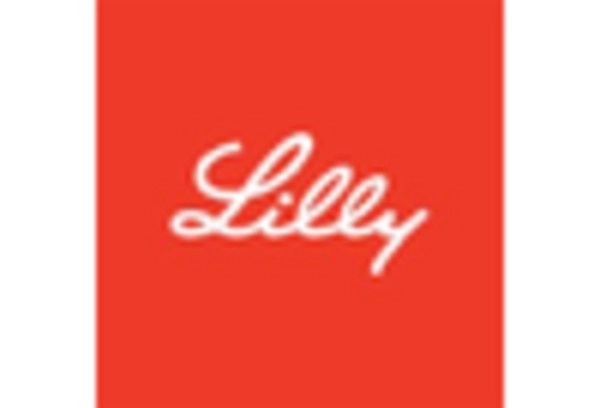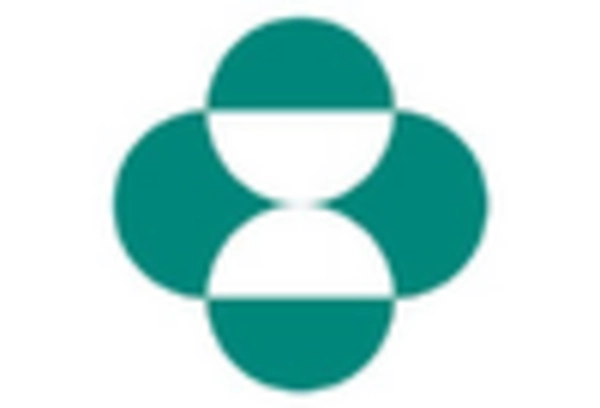Increase in Incidence Rates
The rising incidence rates of malignant glioma are a primary driver for the Malignant Glioma Therapeutics Market. Recent statistics indicate that the annual incidence of glioblastoma, the most aggressive form of malignant glioma, is approximately 3.19 per 100,000 individuals. This increase in cases necessitates the development and availability of effective therapeutic options. As the population ages and risk factors such as genetic predisposition and environmental influences become more prevalent, the demand for innovative treatments is likely to escalate. Consequently, pharmaceutical companies are investing heavily in research and development to address this growing need, thereby propelling the market forward.
Increased Awareness and Advocacy
Increased awareness and advocacy surrounding malignant glioma are contributing to the growth of the Malignant Glioma Therapeutics Market. Patient advocacy groups and healthcare organizations are actively promoting education about the disease, its symptoms, and available treatment options. This heightened awareness is leading to earlier diagnosis and treatment initiation, which is critical for improving patient outcomes. Furthermore, advocacy efforts are driving funding for research initiatives and clinical trials, thereby expanding the therapeutic landscape. As more individuals become informed about malignant glioma, the demand for effective therapies is expected to rise, further stimulating market growth.
Advancements in Precision Medicine
Advancements in precision medicine are significantly influencing the Malignant Glioma Therapeutics Market. The integration of genomic profiling and biomarker identification has enabled the development of targeted therapies that are tailored to individual patient profiles. This approach not only enhances treatment efficacy but also minimizes adverse effects, which is particularly crucial in the context of malignant glioma. The market for targeted therapies is projected to grow substantially, with estimates suggesting a compound annual growth rate of over 10% in the coming years. As healthcare providers increasingly adopt precision medicine strategies, the demand for innovative therapeutic solutions is expected to rise, further driving market growth.
Emergence of Novel Therapeutic Agents
The emergence of novel therapeutic agents is reshaping the landscape of the Malignant Glioma Therapeutics Market. Recent developments in drug formulations, including small molecules and monoclonal antibodies, have shown promise in clinical trials, offering new hope for patients with limited treatment options. For instance, the introduction of drugs targeting specific molecular pathways has demonstrated improved survival rates in certain patient populations. The market is witnessing a surge in the number of investigational drugs entering clinical trials, with a notable increase in the number of FDA approvals for new therapies. This trend indicates a robust pipeline of innovative treatments that could significantly alter the treatment paradigm for malignant glioma.
Growing Investment in Research and Development
Growing investment in research and development is a crucial driver for the Malignant Glioma Therapeutics Market. Pharmaceutical companies and research institutions are allocating substantial resources to explore new therapeutic avenues, including immunotherapy and combination therapies. This influx of funding is fostering innovation and accelerating the development of new treatment modalities. According to recent reports, R&D spending in oncology has reached unprecedented levels, with a significant portion directed towards brain tumors, including malignant glioma. This trend is likely to continue, as stakeholders recognize the urgent need for effective therapies, thereby enhancing the overall market landscape.


















Leave a Comment